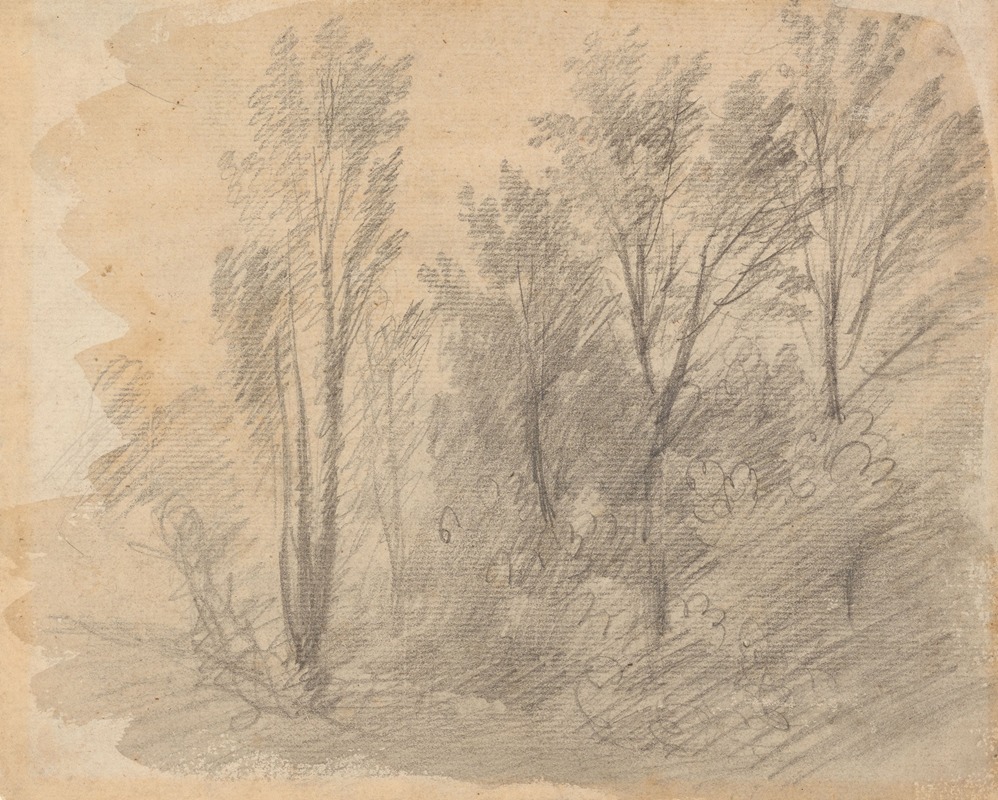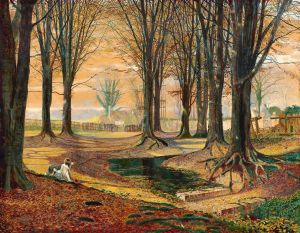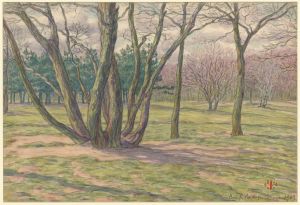
Study of Trees
A hand-painted replica of Thomas Gainsborough’s masterpiece Study of Trees, meticulously crafted by professional artists to capture the true essence of the original. Each piece is created with museum-quality canvas and rare mineral pigments, carefully painted by experienced artists with delicate brushstrokes and rich, layered colors to perfectly recreate the texture of the original artwork. Unlike machine-printed reproductions, this hand-painted version brings the painting to life, infused with the artist’s emotions and skill in every stroke. Whether for personal collection or home decoration, it instantly elevates the artistic atmosphere of any space.
Thomas Gainsborough's "Study of Trees" is a notable example of the artist's work in landscape painting, a genre in which he excelled alongside his more famous portraiture. Gainsborough, an 18th-century English painter, was one of the most prominent artists of his time, known for his innovative approach and his ability to capture the natural beauty of the English countryside.
"Study of Trees" reflects Gainsborough's deep appreciation for nature and his skill in rendering it with a sense of realism and vitality. Although specific details about the creation date and the exact location depicted in "Study of Trees" are not well-documented, it is consistent with Gainsborough's broader body of work, which often featured rural scenes and woodland settings.
Gainsborough's technique in "Study of Trees" demonstrates his mastery of texture and light. He employed a loose, expressive brushwork style that was somewhat unconventional for his time, allowing him to convey the movement and life within the landscape. This approach helped to create a sense of immediacy and intimacy, inviting viewers to experience the scene as if they were standing within it.
The composition of "Study of Trees" is carefully balanced, with a focus on the interplay of light and shadow among the trees. Gainsborough's use of color is subtle yet effective, with a palette that captures the varied greens of the foliage and the dappled sunlight filtering through the branches. This attention to detail and atmosphere is characteristic of Gainsborough's landscapes, which often evoke a sense of tranquility and harmony with nature.
Gainsborough's landscapes, including "Study of Trees," were not merely studies of nature but also reflections of his personal connection to the countryside. Unlike many of his contemporaries who painted idealized or classical landscapes, Gainsborough preferred to depict the natural world as he observed it, with all its imperfections and idiosyncrasies. This approach resonated with viewers of his time and continues to be appreciated for its authenticity and emotional depth.
While Gainsborough is perhaps best known for his portraits of the English aristocracy, his landscapes have earned him a lasting reputation as a pioneer of the genre. "Study of Trees" exemplifies his ability to capture the essence of the natural world, showcasing his technical skill and his unique artistic vision.
Today, Gainsborough's works, including his landscapes, are held in high regard and can be found in major art collections and museums around the world. "Study of Trees" remains an important piece within Gainsborough's oeuvre, illustrating his contribution to the development of landscape painting and his enduring influence on subsequent generations of artists.


















